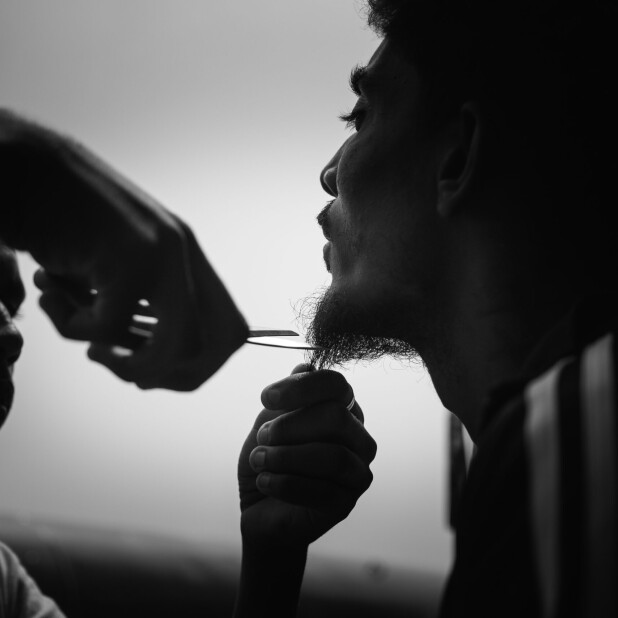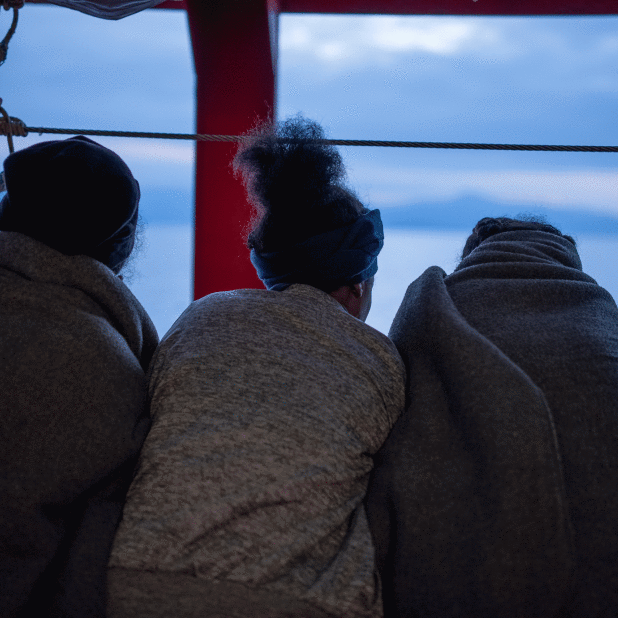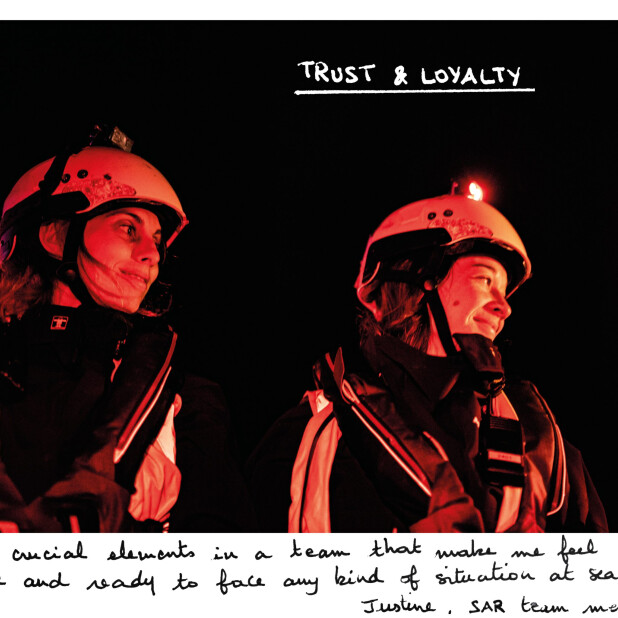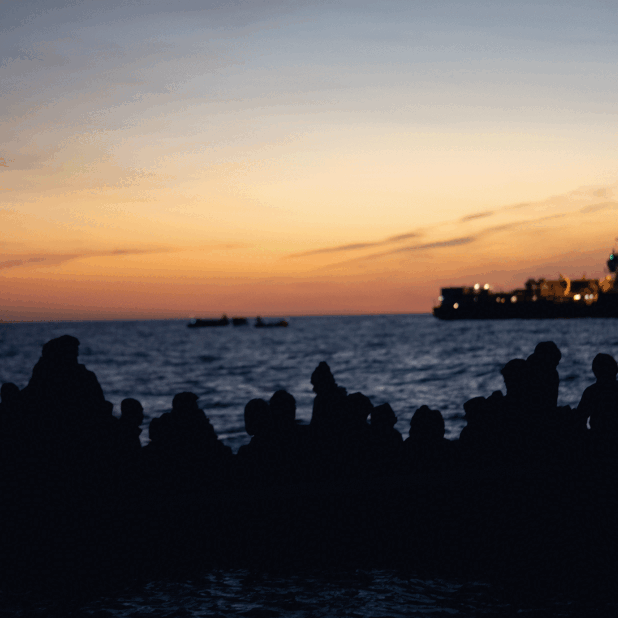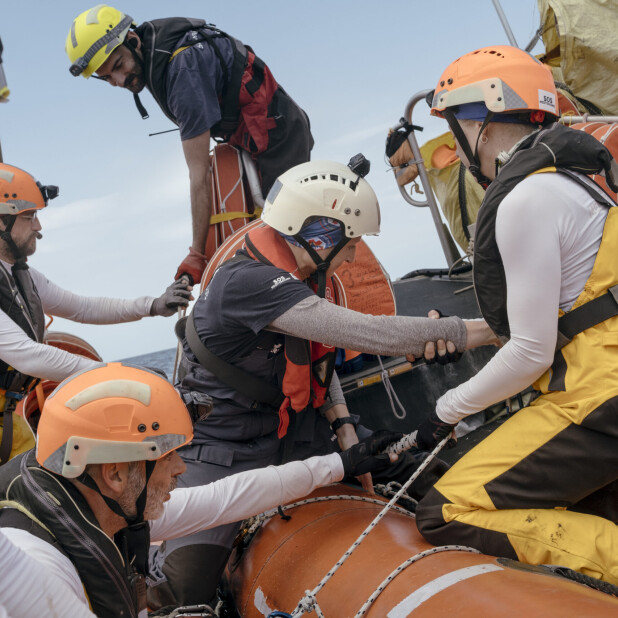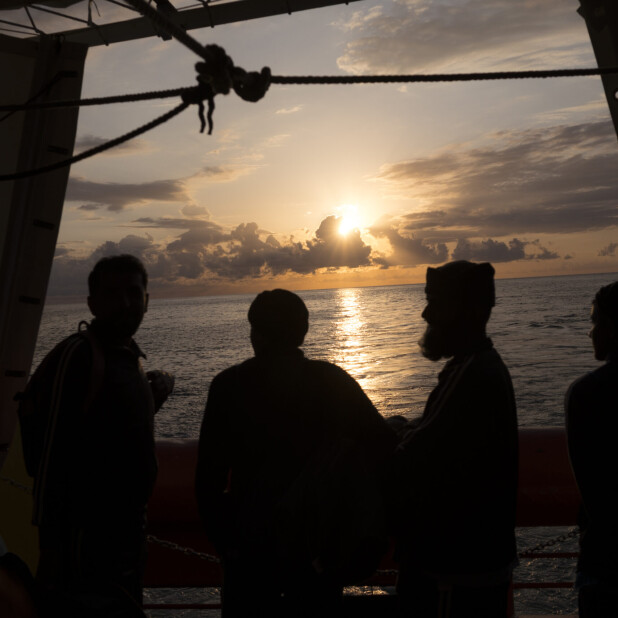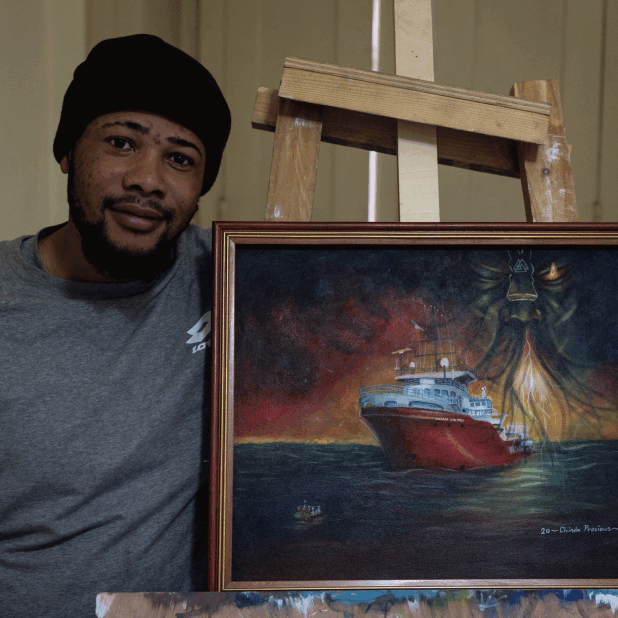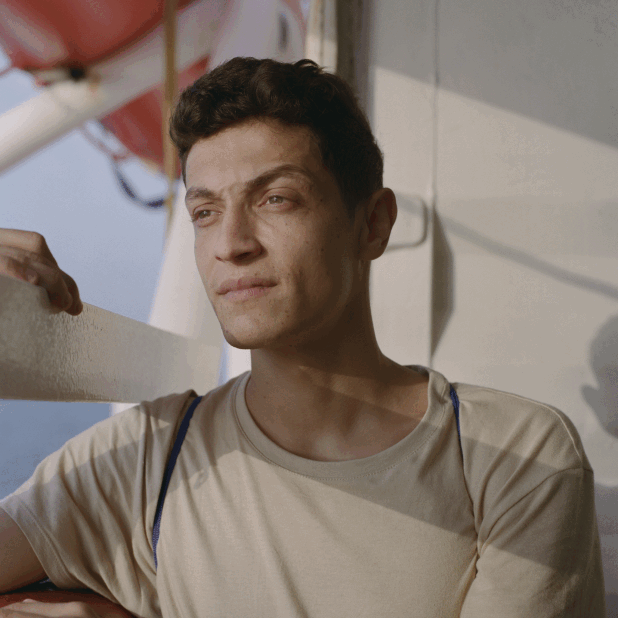
Independent professional photographer, Jérémie first embarked onboard Ocean Viking in 2021. He joined SOS MEDITERRANEE’s communication team in February 2022 to continue documenting the tragic reality unfolding in the central Mediterranean.
“On Friday 25 March 2022, the SOS MEDITERRANEE rescue team rendered assistance to 130 people in critical operating conditions.
At 1:14pm, the Ocean Viking is in copy of an email sent by Alarm Phone* reporting a boat in distress in International waters off Libya and alters Course in its direction. I prepare my equipment and cameras to be ready to board one of our rescue boats (Rhibs) when the signal is given. Beside me, my search and rescue teammates are getting equipped. The movements are sure and precise. There is no room for chance or hesitation in a preparation that has been rehearsed many times in training and in real conditions.
At 2:27pm, visual contact with the boat in distress is established with binoculars from the Bridge and the order to launch our zodiacs is given simultaneously. I take place on the Easy 2 RHIB, in the middle of the team of which I am a member. Each of the rescues I have photographed begins with this apprehension about the situation we are potentially going to face. I quickly realise that this one is different from what I have experienced before. The sun that accompanies us is deceptive and the wind and waves are quick to remind us of their existence. Two to three metres high, they slam into the sides of our rescue boat and buffet us as we head towards the boat in distress at the maximum speed allowed by the weather. Our zodiac bangs and bounce off every wave that breaks against it.
“I know they exist, these precarious boats, unseaworthy, overloaded of people ready to risk everything to leave a hell. But to see them appear before my eyes is a systematic shock”
About twenty minutes after leaving the Ocean Viking, a large rubber boat appears before our eyes. On board, there are about a hundred people. Its shape is silhouetted against the horizon, and the dozens of upraised arms that emerge from it are sometimes brandishing derisory inner tubes. As with every rescue, the same incredulity grips me. I know they exist, these precarious boats, unseaworthy, overloaded of people ready to risk everything to leave a hell. But to see them appear before my eyes is a systematic shock, so far away from everything, in the limbo of the central Mediterranean.
The dinghy’s waterline is extremely low. It looks infinitely vulnerable as the growing waves pound it relentlessly and it threatens to fill with water at any moment. There is no time to lose. The wind, already strong, continues to pick up to 30 knots. Our rigid hull inflatable boat (RHIB) is pitching as we hand out life jackets to the people on board. I take photos as best I can to document the rescue, but quickly drop my cameras to help the crew get the people we’ve just extracted into our rescue boat. The deteriorating weather makes manoeuvring very difficult. The wind makes the radios barely audible; we must shout to relay communications. The waves breaking against us made us stagger as the foam covered our equipment. Faces of the crew are tense, focused. The people we are assisting onto Easy 2 are exhausted, freezing. Some literally collapse on the deck. The three Rhibs of the Ocean Viking make several shuttles to extract them and bring them to safety despite the extreme conditions. For several hours, we will evacuate the men, women and children from the dinghy and take them to the temporary safety of the Ocean Viking. They are exhausted from the 12 hours they have spent on board this rubber boat.
“The testimonies of some of the survivors will establish that these two people lost their lives before the rescue operation began. “
By 5.05pm, the 130 survivors have now joined the 30 people rescued the day before on the deck of Ocean Viking where they are being cared for by the medical and care teams. We return to the drifting boat. On its deck, objects abandoned by the survivors are floating in a mixture of turbid water and fuel. In the middle of a heap of clothes, jerry cans of petrol, shoes, inner tubes, are the bodies of two half-submerged men. Two men for whom we can do nothing more, except try to bring their bodies back on board, so that they can be disembarked with dignity and have a burial. The extreme weather conditions will only allow us to recover one of these two bodies, after several hours of effort by our teams.
The testimonies of some of the survivors will establish that these two people lost their lives before the rescue operation began.
Two more people have been added to the endless list of lives lost at sea. Two more among the tens of thousands of trajectories cut short in the Mediterranean.That evening, contradictory feelings were running through my head. On the one hand, the immense relief of knowing that 130 more people have been brought to safety. On the other hand, the sadness, just as immense, that they are not 132. I have a taste of salt on my lips and a bitterness in my mouth.
Their names were Selif and Mascad.”
*Alarm Phone is a civilian network that provides a hotline for boats in distress in the Mediterranean.
Cover picture and video: Jérémie Lusseau / SOS MEDITERRANEE

